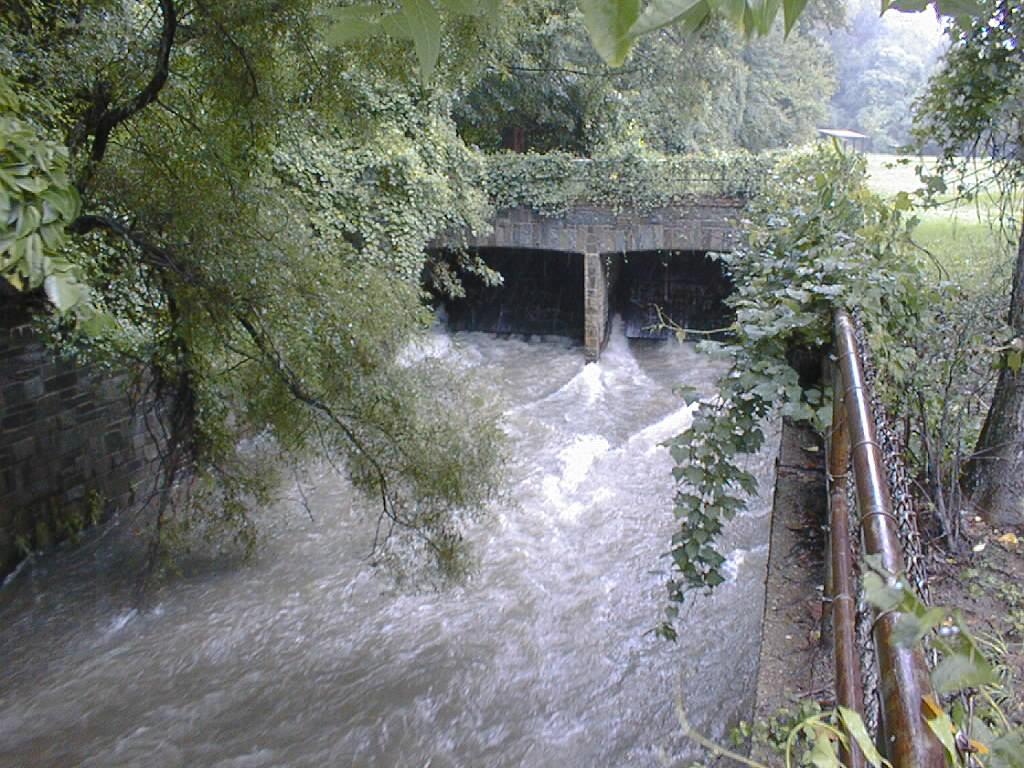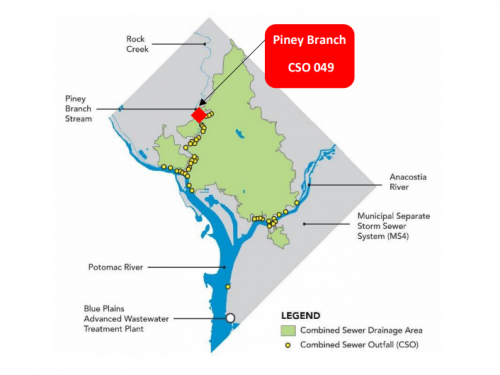Piney Branch Tunnel
DC Water’s Piney Branch Tunnel

Piney Branch Tunnel overview
DC Water’s Clean Rivers Project will construct the Piney Branch Tunnel Project within Rock Creek Park in northwest Washington, DC. The tunnel will capture and store a minimum of 4.2-million gallons of sewage combined with stormwater, known as combined sewer overflow (CSO), that will otherwise overflow into Piney Branch when the capacity of the existing combined sewer system is exceeded during storms. The United States Environmental Protection Agency (USEPA) currently lists Piney Branch as an impaired waterbody under the Clean Water Act.
The Piney Branch Tunnel Project will comply with the 2005 Federal Consent Decree entered into by DC Water, the District, the USEPA, and the US Department of Justice, as amended January 2016, and modified December 2020. The project is designed to improve water quality in Piney Branch, Rock Creek, and ultimately the Potomac River and Chesapeake Bay by reducing untreated discharges to the sewer system and increasing sewer overflow storage and conveyance capacity.
Currently, an estimated 40 million gallons of untreated combined sewer discharge overflows into Piney Branch in a year of average rainfall during heavy storm events. This harms local waterways and wildlife. Once completed, the Piney Branch Tunnel will capture and store most of this overflow during storms, reducing these overflows by 96% and limit the frequency of overflow events from 25 to one in a year of average rainfall.

The project includes construction of a diversion structure at the Piney Branch outfall, known as CSO 049, to redirect sewer flows to the storage tunnel. A structure will also be constructed adjacent to Park Road NW to discharge the combined sewage from the tunnel back into the existing sewer system to DC Water’s Blue Plains Advanced Wastewater Treatment Plant for treatment when the system can handle the volume.

Schedule
| Procurement | 2024-2025 |
| Construction | 2025-2029 |
Environmental Assessment (EA) and Finding of No Significant Impact (FONSI)
DC Water and the National Park Service (NPS) prepared an Environmental Assessment (EA) to comply with the National Environmental Policy Act (NEPA). The EA analyzed and evaluated potential environmental impacts associated with the project. NPS also elicited public comments on the EA. NPS considered two alternatives in the EA, a no-action alternative and a proposed action alternative, the construction of the Piney Branch Tunnel.
Following extensive review, the National Park Service (NPS) approved DC Water’s proposal to construct the Piney Branch Tunnel on NPS land in Rock Creek Park. A Finding of No Significant Impact (FONSI) was signed on March 5, 2025, selecting the construction of the Piney Branch Tunnel. The FONSI describes the rationale for the decision and outlines measures that will be taken to avoid, minimize and mitigate any impacts. The Environmental Assessment and Finding of No Significant Impact can be viewed at https://parkplanning.nps.gov/dcPineyBranch.
Keep Up to Date With the Project

Call our
Outreach
Coordinators
-

202-787-4400






Do you have a question or comment?